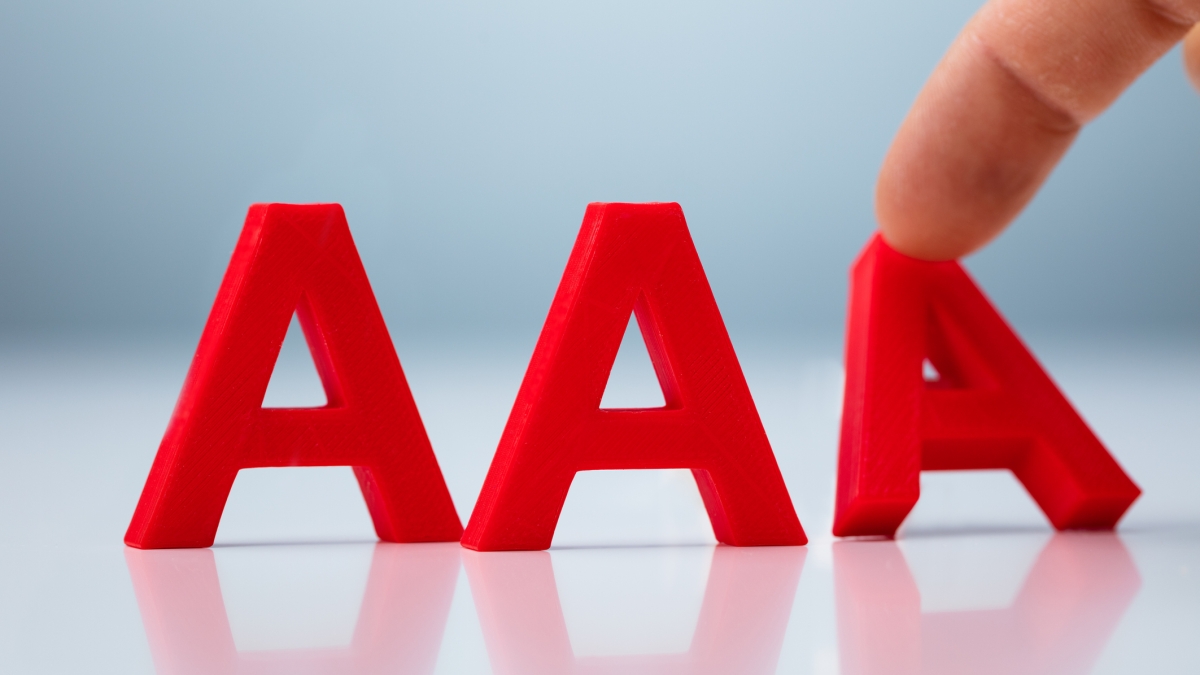The United States’ credit rating just got downgraded.
Fitch Ratings — one of the three major U.S. credit agencies — cut the country’s AAA rating to AA+ earlier in the week. The reason: spiraling deficits and the two political parties’ unwillingness to come together and tackle long-term spending and fiscal issues facing America, such as Social Security and Medicare.
“In Fitch’s view, there has been a steady deterioration in standards of governance over the past 20 years, including on fiscal and debt matters,” the credit rating agency said regarding their decision. “The repeated debt-limit political standoffs and last-minute resolution have eroded confidence in fiscal management.”
It sounds like a chilly proclamation, but what exactly does it mean for the U.S. and its citizens?
ASU News spoke to Geoffrey Smith, a clinical professor at the W. P. Carey School of Business in the Department of Finance. A former corporate and municipal financier, Smith’s research focuses on capital structure determinants and economic structural changes.
Here’s what he had to say about the downgrade, the strength of the U.S. economy and if the country can get its AAA rating back.
Geoffrey Smith
Question: What did it mean when Fitch Ratings recently cut the United States credit rating by one notch?
Answer: The Fitch credit rating represents Fitch's opinion on how much default risk — meaning the risk of not receiving debt payments as promised — a bond investor takes when buying U.S. government bonds — meaning lending money to the U.S. government.
By cutting the U.S. credit rating by one notch, Fitch is saying that they now believe U.S. government bonds have a higher risk of default — not paying as promised — than before the downgrade.
Bond investors do not like default risk, so the U.S. government will now have to compensate bond investors for this new amount of risk. This means that interest rates on U.S. government bonds will be higher than before the downgrade. It also means that consumers will likely pay higher interest rates whenever the interest rate paid by the U.S. government is the baseline rate upon which consumer interest rates are determined.
Q: What were the contributing factors for them to take this action?
A: Fitch cited the high and growing government debt burden and the erosion of governance relative to other highly rated peers. Examples of poor governance include repeated debt-limit standoffs and last-minute resolutions.
According to USDebtClock.org, U.S. government debt now stands at about $33 trillion, which is essentially unpayable by just taxing U.S. citizens (personal and corporate taxes). Aside from taxes, the other repayment methods are issuing new bonds or printing new money. Printing new money causes inflation, so that window is closing, as prices continue to rise with stagnant wages.
Q: What are the steps moving forward to get this rating back?
A: Reducing the outstanding debt would be a good start, but that is politically impossible. Fitch pointed to the debt-limit standoffs and last-minute resolutions contributing to the credit rating downgrade. So avoiding those types of political stunts would help.
Q: What is your opinion on the long-term outlook for the U.S. government debt rating?
A: In my opinion, the Fitch downgrade could be just the beginning. The current debt level of about $33 trillion is already unpayable through taxation alone. In the long run, my guess is that the U.S. government will technically default through inflation and money printing.
Top photo courtesy iStock/Getty Images
More Business and entrepreneurship

Honoring 2 decades of entrepreneurial impact on a global scale
Thunderbird for Good, the impact-driven initiative of Thunderbird School of Global Management at Arizona State University, is marking two decades of educational programs and initiatives dedicated to…

ASU and GoDaddy launch Student Athlete Venture Studio
In a groundbreaking initiative aimed at empowering college athletes beyond their playing careers, Arizona State University and GoDaddy teamed up to launch the first-of-its-kind Student Athlete…

Boosting entrepreneurship to meet the market's needs
America loves an entrepreneur — the home run king of all businesspeople.And at Arizona State University, we love them, too.Here’s a look at how ASU prepares business students, alumni, development…



